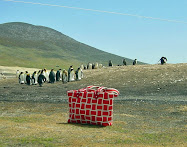
Would that we could all construct our image for posterity like the fabled Virginia Oloini born into an aristocratic family from La Spezia in 1837. Feted for her beauty from childhood she was intelligent, capricious and a gifted linguist. At seventeen she married the Count di Castiglioni but that did not prevent her from having an affair with Vittorio Emmanuele II who was later to unify Italy. During the Congress of Paris which opened in 1856 she used her wiles, her glamour and her astute political instincts to promote Italian interests and she always believed that she played a key role in the eventual establishment of the Kingdom of Italy in 1861.
Although she led a quixotic life in the highest social circles of Paris and Italy, she was never to regain the same political influence. However her true legacy lies in a remarkable series of portraits taken by the Parisian photographer Pierre-Louis Pierson which were sought after by collectors in her lifetime. They demonstrate her creativity and her narcissism, her shameless self-absorption and her constant need for admiration. Not surprisingly she came to mourn the loss of her beauty, grew increasingly reclusive and died alone in Paris in November 1899.
A couple of paragraphs here hardly do justice to her high octane life, played out in a fascinating and complicated period of European history. Her story and what now may be seen as her 'performance art' is being revisited and reassessed by feminists and art historians, and comparisons drawn with the work of Cindy Sherman and Yasumasa Morimura.
I have been reading 'La Divine Comtesse' Photographs of the Countess de Castiglione by Pierre Apraxine and Xavier Demange, Yale University Press in association with The Metropolitan Museum of Art, New York 2000 from which the images are taken.









































Ah, I remember when the Yale book came out and WoI did a story on these photographs. I never did end up picking up the book, so thank you for this.
ReplyDeleteThere is something tragic about one's beauty defining one - as warm as it is in the sun is as cold as it becomes once it has set and one is no longer the belle of the ball. But in these photographs the Countess is preserved for posterity. Their whimsy and artistry also prove that just a pretty face she wasn't.
I have to check out this book!I love your blog!
ReplyDeleteWhat a pleasant surprise to pop over to read what's happening and to discover that I'm listed as a favorite! Merci Beaucoup!!!!
ReplyDeleteAnd nice blog today - you really have great content.
Cheers,
Toma
Emily E E, Architect Design and Antiques Diva, thank you all so much for your support. Means a lot to a Blog Virgin!
ReplyDeletelastly- la did a post on this in may-model as muse. wasnt she something-not sure what, but fascination abounds. G
ReplyDeleteThe first shot reminds me a little of Man Ray. It's probable the image was iconic enough for him to pay unconscious homage to it. I was going to say it also discreetly foreshadows Max Ernst's Robing of the Bride, but after looking at the painting again, only in my own private Idaho.
ReplyDeleteMan Ray, definitely.
I'd say Man Ray and the stuff Salvador Dali did for that surrealist pavilion, the whereabouts and date of which escapes me now and too lazy to go and find out, sorry.
ReplyDelete